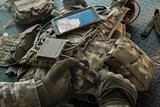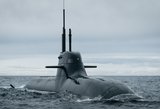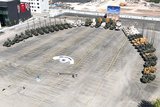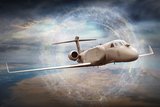Synthetic Environments: Enhancing preparedness and ensuring operational success (sponsored)
This article is brought to you by Improbable
From government crisis response to the grey area of hybrid warfare, every action and reaction can have consequences that ripple across the whole of society. To overcome these challenges, national security decision makers need to feel confident they can understand the increasingly complex and interrelated world we all live in. It’s also vital they feel confident in understanding the options available to them, and the cascading consequences of these decisions.
Models and simulations can help, turning data into information, information into insight, and insight into action. This is where synthetic environments come in.
Richly detailed and endlessly adaptable, these virtual worlds integrate land, sea, air, space and cyber with the information domain as well as abstract political, social, diplomatic and economic systems. Thanks to advanced modelling and simulation capabilities, they also allow users to investigate the likely cross-domain consequences of different actions based on a range of assumptions.
Not only does this give users at every level greater insight into their operating environment and the nature of the challenges they face, it also allows them to train effectively, frequently and economically to overcome those challenges.
Here are just some ways that synthetic environments can be deployed to make for more effective and efficient decision making across defence.
Planning and policy design
Planners, policy designers and decision makers can use synthetic environments to evaluate, analyse and respond to the challenges they face, and help them to design policy with national security implications in mind.
With synthetic environments like ours, users can experience and interact with their environment via a live geospatial dashboard for improved situational awareness, a course-of-action editor for collaborative policy design, and an all-domain virtual simulation environment for testing, comparison and rehearsal.
Collective Live-Virtual-Constructive training
Synthetic environments are one of the best ways to train more people, more quickly and more effectively – all while reducing overall costs. Drawing on the latest and most relevant content from across the industry, these environments can represent 5+1 domains together with PMESII factors. They include mission directive dashboards as well as immersive, interactive environments that can accommodate thousands of participants who can access them from anywhere in the world on almost any device.
Training in virtual worlds also helps to address two important challenges that governments are trying to meet. The first is to get more out of their budgets and find cost efficiencies. The second is to reduce their carbon emissions and impact on the environment.
Integrating training and planning at every level
It’s increasingly vital that military leaders bring planning, training and decision support together across strategic, operational and tactical levels simultaneously.
As well as helping improve situational awareness, synthetics can also enhance and accelerate existing planning processes. Plans can then be tested by hundreds of personnel, who can train and rehearse collectively within the same synthetic environment. Feeding performance data from these training sessions back into the planning process creates a positive feedback loop.
Enhancing national resilience
Sophisticated synthetic environment platforms like ours can incorporate live data sets and the most reliable models available, and feature a live geospatial dashboard. These dynamic, data-rich synthetic environments can aid policy design, planning and decision making across departments, and promote cross-government integration at national, regional and local levels. At a time when collaboration matters more than ever, synthetic environments are one of many tools that enable better communication.
Best of all, synthetic environments enable better collaboration between technology providers for defence. Governments and defence organisations no longer have to choose the best from what’s available – they can use Improbable’s platform and partner ecosystem to commission the precise synthetic capabilities they need. And they can do it more quickly and economically than ever.
In an increasingly complex and dangerous world, the ability to understand the environments we operate in is of paramount importance. Synthetic environments can and should form the digital backbone of our defence, providing for a safer and more resilient world.
For more information, visit Improbable’s defence website here.
More from Industry Spotlights
-
![From surface to seabed: Fincantieri takes on a new challenge]()
From surface to seabed: Fincantieri takes on a new challenge
Underwater is emerging as the global geopolitical domain, a crossroads between new needs and technological acceleration. While 80% of the sea floor and 98% of the abyssal seabed remain unexplored (Mars' and Jupiter's surfaces are better known than our oceans), human well-being relies on underwater assets and resources.
-
![How can multiple domains act as one?]()
How can multiple domains act as one?
How can we sense, make sense, and act faster than the adversary?
-
![Why modern air defense demands layers: inside Türkiye’s Steel Dome revolution]()
Why modern air defense demands layers: inside Türkiye’s Steel Dome revolution
From swarming drones to hypersonic missiles, single-layer defenses are no longer enough. Türkiye’s Steel Dome shows the way forward.
-
![Protecting the horizon]()
Protecting the horizon
Make it an unfair fight, with the EA-37B. Deny, degrade, and disrupt the enemy.






















